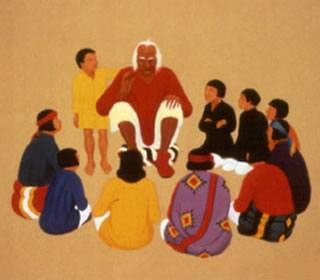We live in a world with information overload. Data, facts, statistics and definitive answers to specific questions are immediately available from search engines on the internet. But people want more than facts. They want understanding. They want meaning. They want context. They want stories.
Children ask their parents to tell them stories because they like to fit the pieces of the story into a context they can understand. It is the same with adults. Audiences at conferences do not want to be bombarded with data and figures. They want stories with emotional impact that hold their interest and convey meaning.
Telling a story is a powerful way to get your message across. One of the reasons that Christianity took hold is that Jesus conveyed his message not in sermons or theological discourses but in parables – he told stories that people could easily understand and repeat to others. Stories involve people, emotions, feelings, consequences and outcomes. They hold our interest because we want to find out what happens to the people in the stories.
When you want to communicate an important point then tell a tale. Compare these two approaches that a bank might use to let entrepreneurs know about business loans.
A. Last year we made over 15,000 loans to small businesses with a total funding in excess of $1200 million. On average we arranged the loans within 27 days of initial enquiry and we have streamlined our applications with on-line systems that speed processing. We have over 250 trained account managers to optimize customer service. In surveys of small business owners we are consistently rated one of the top four banks to deal with.
Which message is more likely to gain your interest? If you want a loan which approach is more likely to convince you to look further into what the bank has to offer? How do you tell a story? Here are some simple steps to follow: Go through your own life and think about some of your most vivid memories, some of the difficulties or problems you faced, some of the funny or emotional things that happened to you. What were the lessons you learned? We all have stories within us and sometimes we can enrich the lives of others if we tell a relevant story well. You have to be prepared to bare yourself, to share your feelings and frailties. But by doing this sincerely you can gain enormous respect and sympathy from your audience. Do not short change your listeners; vividly describe your feelings, your emotions, your pain, your joy. They want to hear how bad it was, how scared you were, how surprised you were, what happiness you felt. Above all they want closure. They want to know what happened and why. When, in later life, you think about your parents or grandparents what you will most likely remember are not the facts about their lives, nor details of their earnings, wealth or qualifications. You will remember the stories they told you; especially heart-warming stories about when they were growing up, their relationships with their parents, the mistakes they made, the adventures they had. Build your own store of interesting stories. Be prepared to tell them in social and business contexts. You can tell a personal story on all sorts of occasions – on a date or when giving a keynote talk. The stories about things that happened to you are the best. But interesting stories about other people are also worth retelling if they are really amusing or make a great point. E. M. Forster explained it very simply. A fact is, ‘The queen died and the king died.’ A story is, ‘The queen died and the king died of a broken heart.’ When you want to convey a message, don’t think just in terms of giving information. Ask yourself how you can illustrate the message with examples and tales. Use fewer facts and more stories. P.S. Here is a personal story I told on Lifehack: We Need to Challenge Our Children

